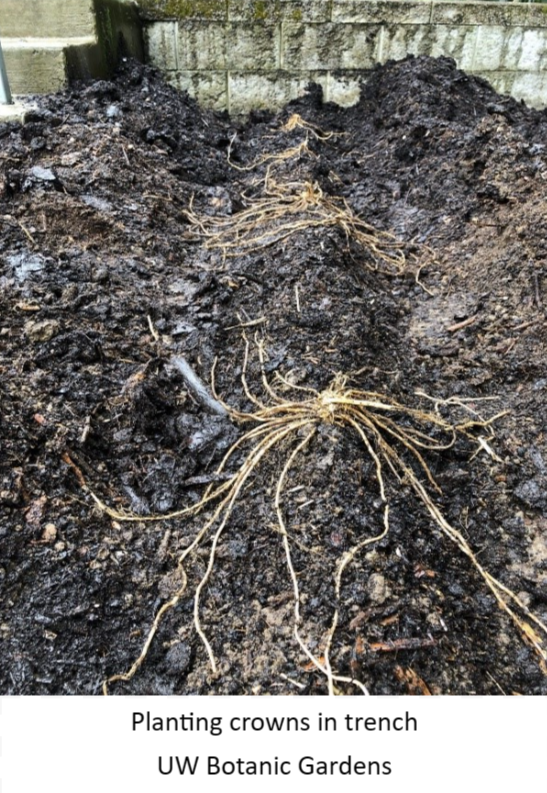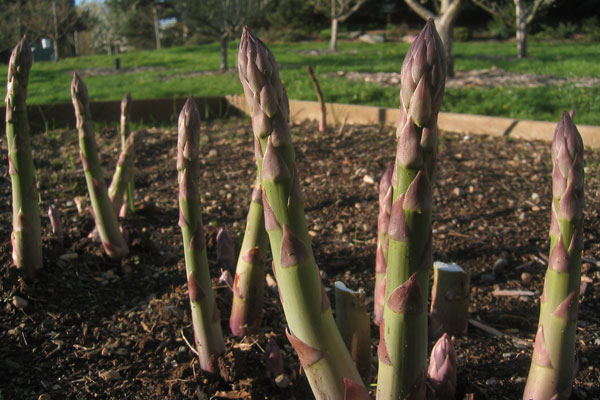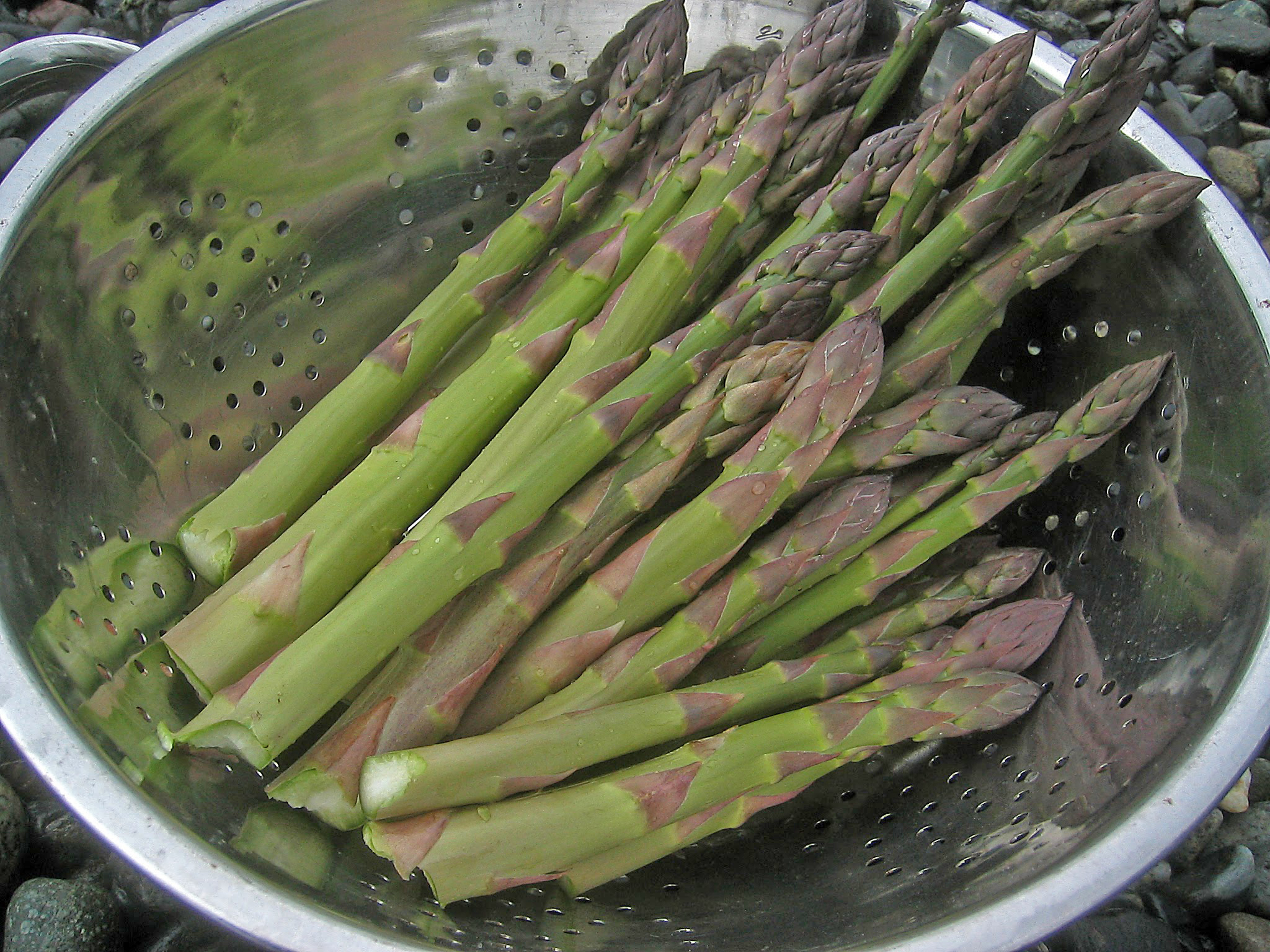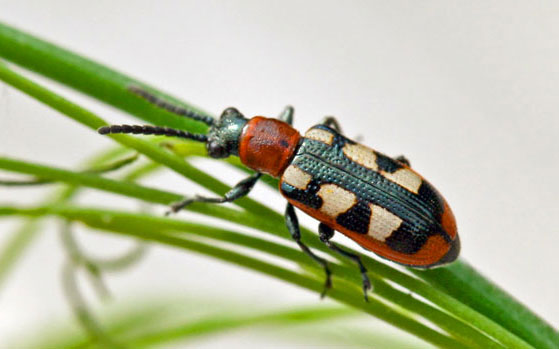growing asparagus
Site Preparation and Planting
Asparagus is a very rewarding vegetable to grow, but it does take some effort to establish, and a few years to come into production. Once established, it is fairly easy to maintain. Asparagus is grown from the root systems of two-year old plants, called crowns. They are grown for the purposes of selling at the crown stage, which is much faster than starting from seed. Store the asparagus crowns in a cool, dry location until ready to plant. Do not store crowns in plastic bags.
Planting Instructions
- Choose a site with full sun and well-drained soil. Winter wet soil will lead to quick decline. On heavy soil, consider building a raised bed.
- Dig a trench 18″ wide and 6″-8″ deep. Mix the soil from the trench with compost or aged manure. Create a slight mound down the middle of the trench and set the remaining soil aside.
- Soak the asparagus crowns for 1-2 hours in water.
- Spread the roots of each crown over the mound so they do not overlap– at least 12″ apart, preferably 18″ apart.
- Cover the crowns with 2″-3″ of soil-compost mix. Water in.
- As the spears begin to grow, slowly add more soil compost mix until the trench is full, or the raised bed in 10″-12″ high. This should take about 6-8 weeks.

Care and Harvest
Do not harvest any spears the first spring. The second spring, harvest spears sparingly. Stop harvesting when the spears are the diameter of a pencil or smaller. Harvest the spears by cutting or breaking the stalk just above the soil. Established beds can be harvested usually for 6-8 weeks.
Water the asparagus bed during dry summer weather. Keep it weeded and mulched. If stalks begin to flop outward from the bed (they can reach 6′ or more in height), corral them with a couple of stakes and twine. After the stalks die down in winter, cut them to the ground and mulch the bed with compost. Fertilize each spring before the new spears appear with a good vegetable fertilizer.
Watch for and control asparagus beetles by hand picking, or with neem-based sprays or Spinosad. Control aphids with horticultural soap or a strong jet of water.



